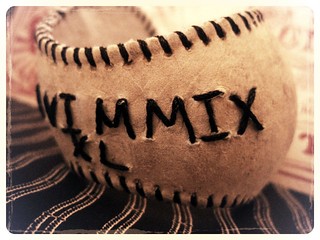The first published rules of baseball were written in September of 1845 for a New York City "base ball" club called the
Knickerbockers., founded volunteer firefighter and bank
clerk Alexander
Cartwright, who is also commonly known as "the father of baseball". Cartwright would codify a new set of rules that
would form the basis for modern baseball, calling for a diamond-shaped
infield, foul lines and the three-strike rule. One important
rule, the 13th, stipulated that the player need not be physically hit
by the ball to be put out; this permitted the subsequent use of a
farther-travelling hard ball. Evolution from the so-called "
Knickerbocker Rules" to the current rules is fairly well documented, thus abolishing the
dangerous practice of tagging runners by throwing balls at them.

(Alexander Cartwright)
On June 3, 1953, Congress officially credited Cartwright with
inventing the modern game of baseball, and he is a member of the
Baseball Hall of Fame. However, the role of Cartwright himself has been
disputed. His authorship may have been exaggerated in a modern attempt
to identify a single inventor of the game, although Cartwright may have a
better claim to the title than any other single American.
Cartwright, a New York bookseller who later caught "gold fever",
umpired
the first-ever recorded U.S. baseball game with codified rules in
Hoboken, New Jersey on June 19, 1846, the Knickerbockers played the first official game of
baseball against a team of cricket players, the game
ended, and the other team (The New York Nines) won, 22-1. Cartwright
also introduced the game in most of the cities where he stopped on his
trek west to California to find gold, beginning a new,
American tradition.
In 1851, the game of baseball was already well-established enough
that a newspaper report of a game played by a group of teamsters on
Christmas Day referred to the game as, "a good old-fashioned game of
baseball.

(New_York_Mutual_baseball_player 1857)
In 1857, sixteen clubs from modern
New York City
sent delegates to a convention that standardized the rules, essentially
by agreeing to revise the Knickerbocker rules. In 1858, twenty-five
including one from New Jersey founded a going concern but the
National Association of Base Ball Players is conventionally dated from 1857. It governed through 1870 but it scheduled and sanctioned no games.
In 1858, clubs from the association played a cross-town, all-star
series pitting Brooklyn clubs against clubs from New York and Hoboken.
On July 20, 1858, an estimated crowd of about 4,000 spectators watched
New York and Hoboken defeat Brooklyn by a score of 22-18. The New York
team included players from the Union, Empire, Eagle, Knickerbocker and
Gotham clubs. The Brooklyn team included players from the clubs
Excelsior, Eckford, Atlantic and Putnam.
In a return match held August 17, 1858, and played at the Fashion
Course in the Corona neighborhood of Queens, a slightly smaller crowd
cheered Brooklyn to a win over New York and Hoboken by a score of 29-8.
New York won a third game in the series, also played at the Fashion Course, on September 10, 1858. It appears that admission fees were charged, as "surplus funds" from the games were to be donated to charity.
By 1862 some NABBP member clubs offered games to the general public in enclosed ballparks with admission fees.During and after the
American Civil War,
the movements of soldiers and exchanges of prisoners helped spread the
game. As of the December 1865 meeting, the year the war ended, there
were isolated Association members in
Fort Leavenworth,
St. Louis,
Louisville, and
Chattanooga, Tennessee, along with about 90 members north and east of
Washington, D.C..

(Jim_Creighton_Excelsior 1860 to 1862)

(Baseball uniforms 1870s)
In 1869 the first openly professional baseball team formed. Earlier players were nominally amateurs. The
Cincinnati Red Stockings recruited nationally and effectively toured nationally, and no one beat them until June
1870.
Already in the 19th century, the "old game" was invoked for special
exhibitions such as reunions and anniversaries — and for making moral
points. Today hundreds of clubs in the U.S. play "
vintage base ball" according to the 1845, 1858, or later rules (up to about
1887),
usually in vintage uniforms. Some of them have supporting casts that
recreate period dress and manner, especially those associated with
living history museums.
For more info visit:
http://en.wikipedia.org/wiki/Origins_of_baseball
xoxo
Lisa
 In the past few years I have done many college football, baseball and basketball cuffs for customers requesting their school colors, many from Texas Am, South Carolina and Rutgers, making the creation more exciting when you have to work with different team colors and football skins.
Too get you thinking, and to prepare for college football season, I have created a few more Rutgers style cuffs w/football leather in red and in black which can be customized to your style w/a rhinestone R for Rutgers or stitched patch letter, or enamel/resin logo center, etc.
In the past few years I have done many college football, baseball and basketball cuffs for customers requesting their school colors, many from Texas Am, South Carolina and Rutgers, making the creation more exciting when you have to work with different team colors and football skins.
Too get you thinking, and to prepare for college football season, I have created a few more Rutgers style cuffs w/football leather in red and in black which can be customized to your style w/a rhinestone R for Rutgers or stitched patch letter, or enamel/resin logo center, etc.
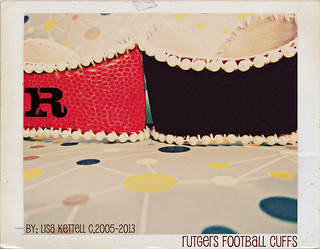 All cuffs come with a metal lined insert or with a clasp, please order accordingly or let me know at check out!
All cuffs come with a metal lined insert or with a clasp, please order accordingly or let me know at check out!

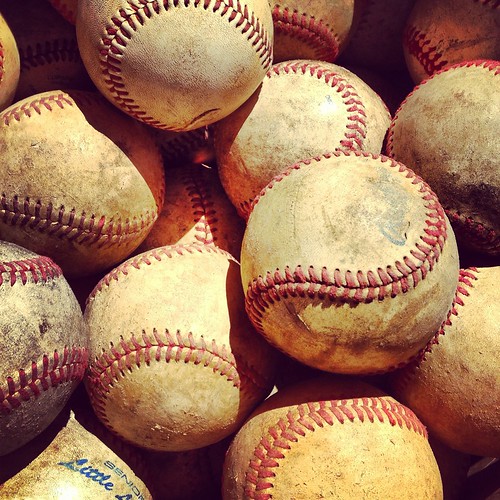
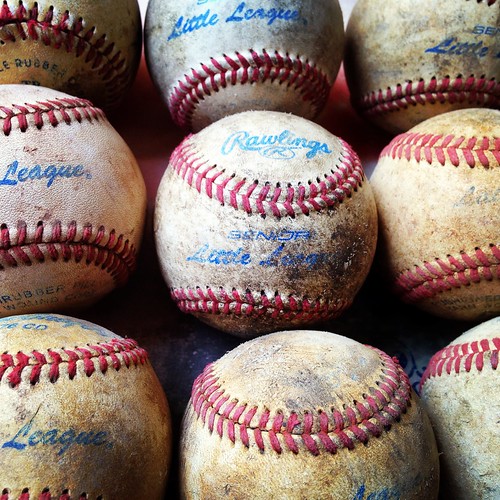
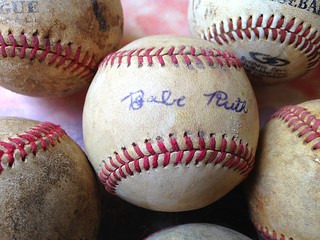

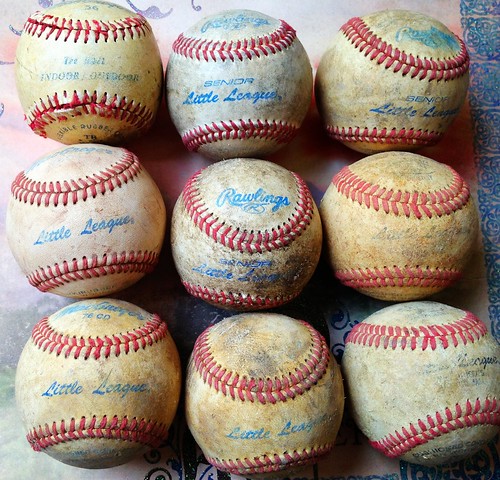
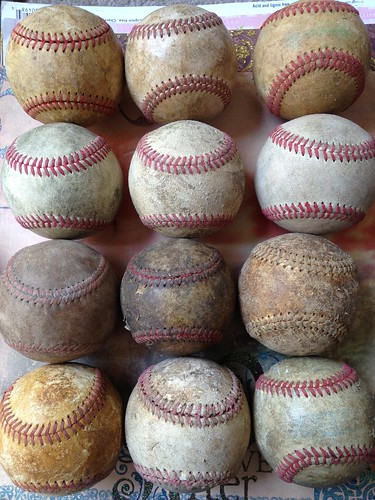
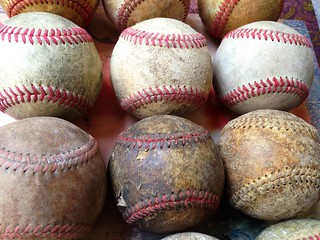
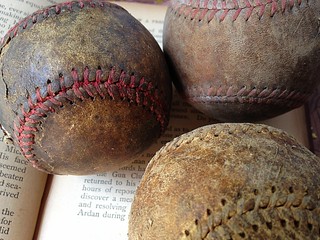
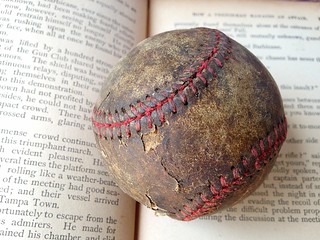



 (New_York_Mutual_baseball_player 1857)
(New_York_Mutual_baseball_player 1857)


 (Baseball uniforms 1870s)
(Baseball uniforms 1870s)




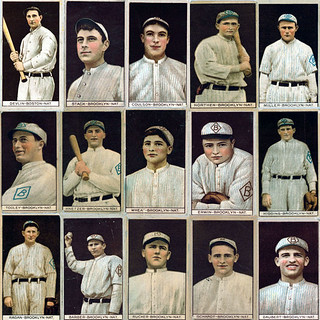 A digital card collage I created using vintage baseball cards measuring 12 by 12
A digital card collage I created using vintage baseball cards measuring 12 by 12


 a digital piece I did out of my love for Babe Ruth
a digital piece I did out of my love for Babe Ruth



